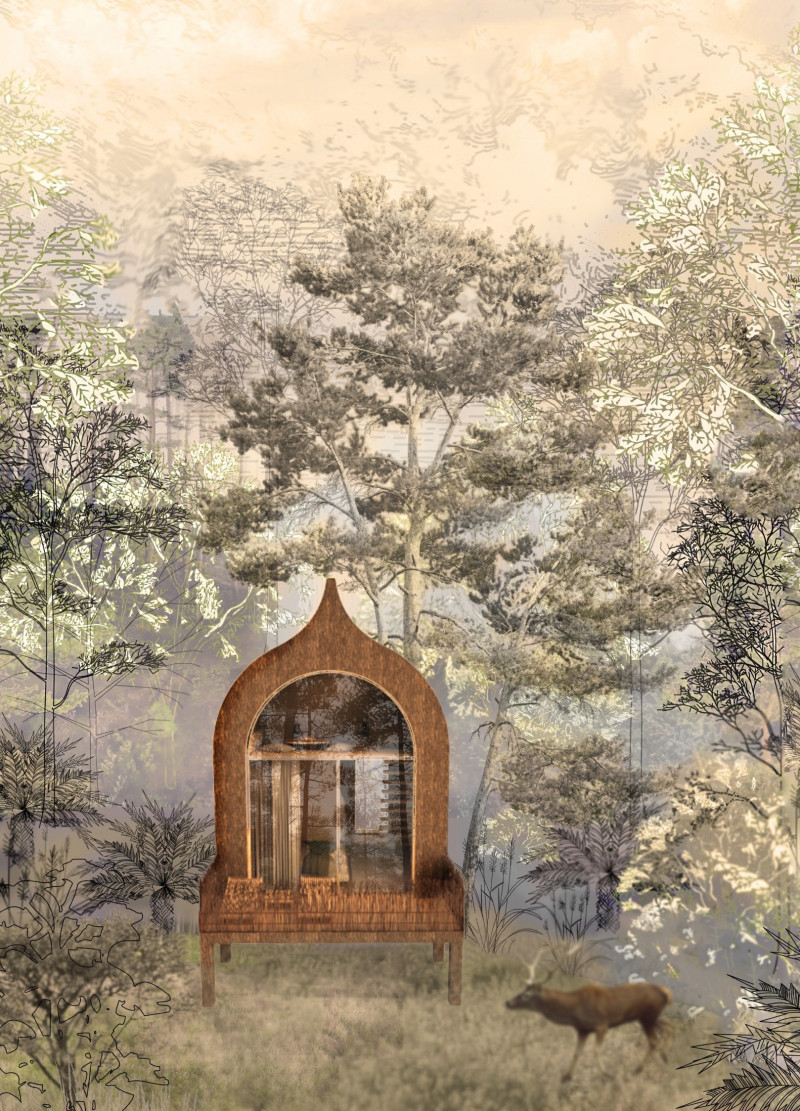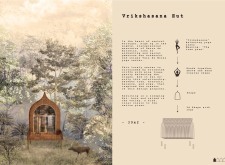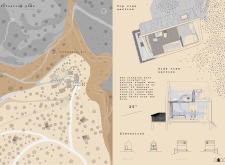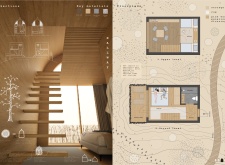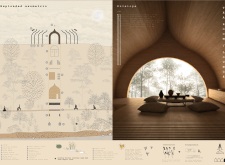5 key facts about this project
The hut functions as a multi-use space for activities such as yoga, meditation, and rest. Its compact footprint of 39 square meters is intelligently organized to maximize functionality while maintaining a connection to the outdoor environment. The architectural design includes an upper level for lounging and activity, along with a lower level composed of essential amenities.
Materials used in the construction include pine bark cladding, structural pine wood, fiber cement boards, and recycled stone, all chosen for their sustainability and minimal ecological impact. The use of large glass panels not only enhances natural light within the spaces but also frames views of the surrounding landscape, further integrating the structure into its environment.
Unique Design Approaches
A notable feature of the Vrikshasana Hut is its organic form, which mirrors local tree shapes and reinforces its connection to nature. The design prioritizes sustainability without compromising aesthetics. Furthermore, the incorporation of vertical reed beds allows for efficient gray water filtration, aligning with ecological practices aimed at minimizing the hut's environmental footprint.
In terms of spatial organization, the hut offers flexible layouts that accommodate various functions, enhancing its usability for different user needs, from communal activities to individual reflection.
Integration with Nature
The architectural design encourages an immersive experience with the natural surroundings, with outdoor areas woven seamlessly into the overall layout. Features such as outdoor spaces promote engagement with nature and serve as additional areas for yoga and meditation practices.
To gain deeper insights into the architectural plans, sections, and overall design elements of the Vrikshasana Hut, readers are encouraged to explore further details about this project presentation.


